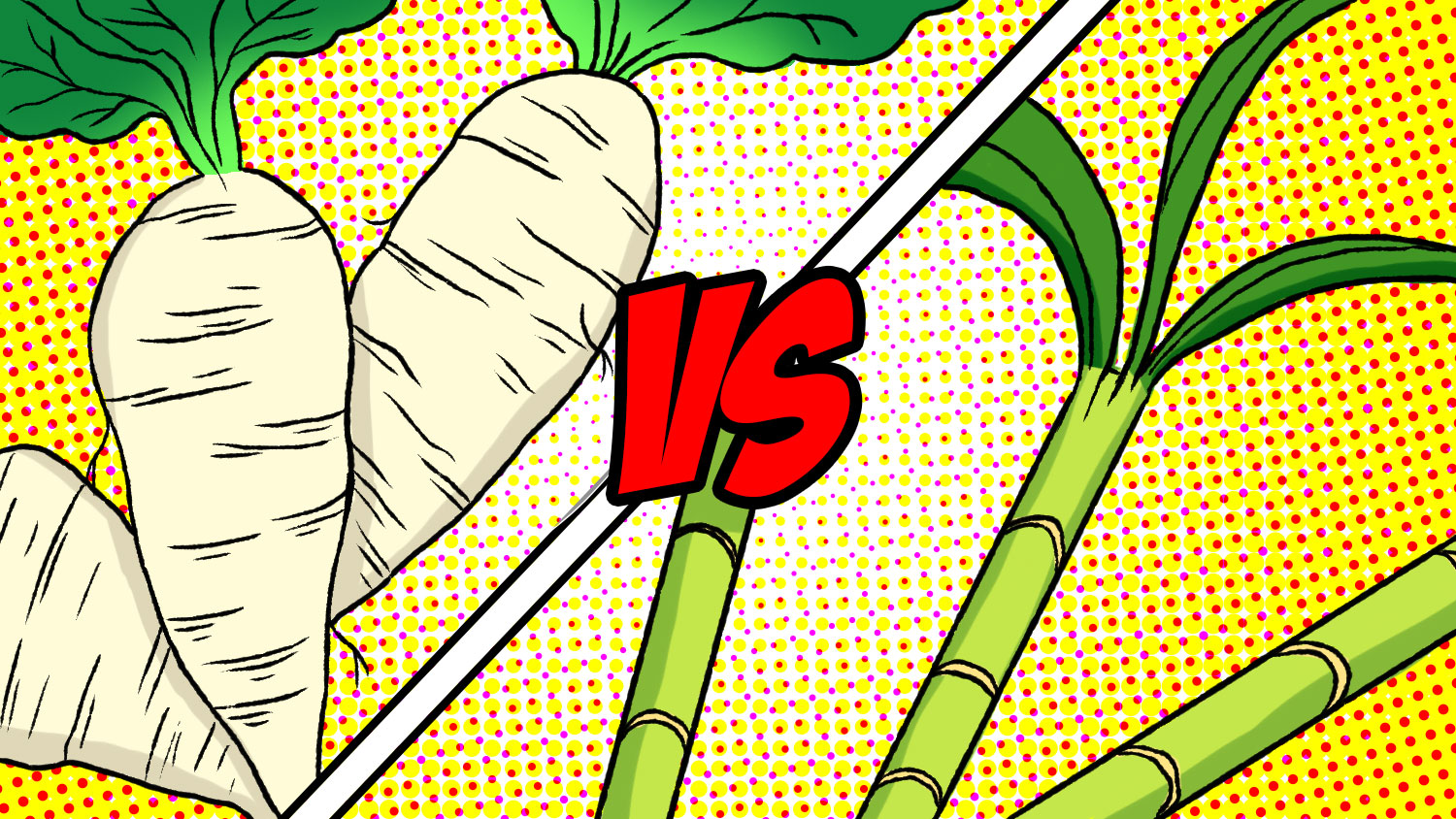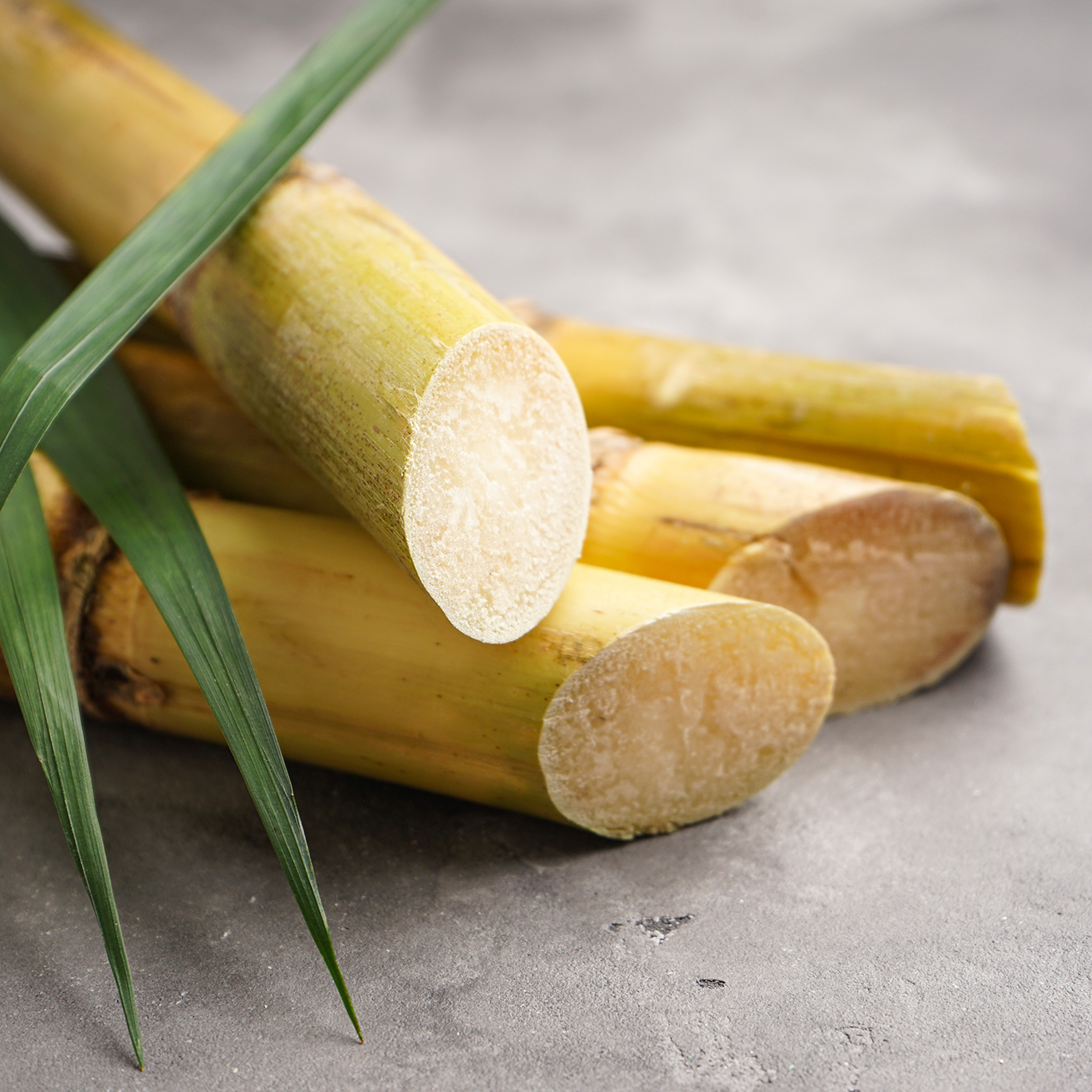Beginners’ guide to Sugar beet vs sugar cane industry practices
Wiki Article
Revealing the Fact Behind Sugar Beet Vs Sugar Cane: Advantages, Uses, and Processing Techniques Clarified
The difference in between sugar beet and sugar cane is frequently neglected in discussions concerning sugar manufacturing. Each crop provides unique advantages and applications in various markets. Their growing practices and processing methods also vary notably. Comprehending these subtleties is necessary for stakeholders in the sugar market. What ramifications do these differences have for wellness, flavor, and environmental influence? Checking out these facets can disclose deeper insights into the international sugar market.
Introduction of Sugar Beet and Sugar Cane
Sugar beet and sugar cane are two main sources of sugar, each with distinct qualities and cultivation techniques. Sugar beet, an origin vegetable, thrives in warm climates and is typically collected in the autumn. Its high sugar content, varying from 15% to 20%, makes it an important crop for sugar production. The procedure involves drawing out juice from the beetroots, which is then refined into granulated sugar.On the other hand, sugar cane is an exotic lawn that grows in cozy, moist settings. It can achieve a sugar material of approximately 14%, however its high, fibrous stalks need substantial processing. The cane is squashed to remove juice, which undergoes boiling and crystallization to generate sugar. Both sources contribute significantly to the global sugar supply, with sugar beet mainly grown in Europe and North America, while sugar cane is mainly grown in Brazil, India, and other tropical regions.
Farming Practices: Sugar Beet vs. Sugar Cane
Growing methods for sugar beet and sugar cane vary substantially due to their unique growing problems. Sugar beetroots prosper in cooler environments with well-drained dirt, while sugar cane favors warmer temperatures and plentiful moisture. Additionally, the harvesting techniques utilized for each plant show these environmental needs and affect overall return and high quality.Growing Conditions Contrast
While both sugar beet and sugar cane thrive in certain environmental problems, their growing techniques differ markedly. Sugar beet is primarily expanded in warm regions, favoring cooler climates with well-drained dirt and modest rainfall. It calls for a growing period of concerning 90 to 120 days, with suitable temperature levels in between 15 ° C to 25 ° C. In contrast, sugar cane embellishments in exotic and subtropical climates, prospering in cozy temperature levels ranging from 20 ° C to 32 ° C. It needs bountiful sunshine and constant rainfall, typically needing watering in drier locations. Sugar cane has a longer growing cycle, usually lasting 12 to 24 months. These distinctions in growing problems significantly affect the geographical distribution and farming techniques related to each plant.Harvesting Techniques Distinctions
The harvesting techniques for sugar beet and sugar cane show their distinctive growth attributes and agricultural methods. Sugar beet is commonly harvested mechanically, with farmers made to uproot the whole plant, ensuring marginal soil disruption. The beetroots are after that transported for processing soon after harvest to maintain high quality. On the other hand, sugar cane harvesting often involves a combination of manual and mechanical approaches. Workers may at first reduce the cane by hand, especially in areas where mechanization is less possible. Subsequently, specialized equipment is used to gather and transfer the cut stalks to processing facilities. These differing methods not just influence performance yet additionally affect the high quality and return of the last sugar products, showcasing the flexibility of each plant to its atmosphere.Nutritional Comparison and Health Perks
When contrasting the dietary accounts of sugar beet and sugar cane, it ends up being clear that each offers unique wellness advantages. Sugar beets are rich in important nutrients like folate, manganese, and potassium, which add to total wellness. They also contain fiber, which aids food digestion and may assist manage blood sugar level degrees. In addition, sugar beetroots are known for their antioxidant buildings, look at this now which can deal with oxidative anxiety.Alternatively, sugar cane is primarily made up of sucrose, supplying quick power. While it does not have the exact same degree of minerals and vitamins found in sugar beetroots, sugar cane does consist of little amounts of B vitamins and minerals such as calcium and magnesium. In addition, sugar cane juice is commonly promoted for its hydrating residential or commercial properties and prospective wellness advantages, including improved digestive health and wellness. Inevitably, the choice in between sugar beet and sugar cane may rely on individual wellness goals and nutritional preferences.
Flavor Profiles and Culinary Utilizes
Taste profiles of sugar beet and sugar cane differ markedly, affecting their culinary applications (Sugar beet vs sugar cane). Sugar cane, with its naturally sweet and intricate taste, is typically favored in beverages, treats, and different cooking dishes. It offers a rich, caramel-like note that boosts the preference of products such as syrups, molasses, and rum. On the other hand, sugar beet has a more neutral and less aromatic preference, making it suitable for applications where sweetness is desired without modifying the recipe's intrinsic tastes. It is frequently utilized in processed foods, baked items, and sweetenersCulinary professionals frequently choose sugar cane for its deepness and splendor, particularly in premium cooking and craft beverages. Alternatively, sugar beet's flexibility as a sweetener in mass-produced things satisfies a broader market. Inevitably, the choice in between these two sugars can substantially impact taste accounts and total culinary experiences.
Environmental Influence of Sugar Production
Sugar manufacturing, whether from sugar beet or sugar cane, lugs considerable ecological ramifications. Sugar cane growing usually results in logging, especially in tropical regions, interrupting regional communities and adding to biodiversity loss. The extensive use fertilizers and chemicals in both sugar beet and sugar cane farming can lead to dirt destruction and water pollution, impacting surrounding habitats and communities. In addition, the high water consumption needed for sugar cane irrigation postures a threat to neighborhood water supplies, especially in deserts.On the other hand, sugar beet farming usually happens in temperate environments, which might alleviate some deforestation concerns. It is not without its very own difficulties, including soil erosion and reliance on chemical inputs. In general, the environmental impact of sugar manufacturing is multifaceted, necessitating lasting farming practices and understanding of source monitoring to minimize damage to communities read here and advertise ecological health.
Processing Methods: From Plant to Sugar
Numerous handling techniques are employed to transform sugar beet and sugar cane right into granulated sugar, each technique reflecting the special qualities of the resource plant. For sugar beetroots, the process begins with cleaning and slicing the roots right into thin strips, which are then based on diffusion-- a technique where warm water removes sugar from the beet slices. The resulting fluid is detoxified, concentrated, and crystallized.On the other hand, sugar cane processing involves crushing the stalks to draw out juice, followed by explanation to remove pollutants. The juice is after that evaporated, resulting in syrup look at more info that undergoes formation. Both processes are adhered to by splitting up of the sugar crystals from the molasses, which is a by-product. The last phases consist of drying and packaging the granulated sugar for circulation. These strategies highlight the unique pathways through which these two plants produce sugar, each with its own collection of obstacles and performances.
Financial Aspects of Sugar Beet and Sugar Cane Industries
The financial landscape of the sugar beet and sugar cane markets discloses noteworthy differences in production expenses, market dynamics, and regional impacts. Sugar beet, mostly grown in warm environments, commonly incurs higher production expenses due to labor and input expenditures. Conversely, sugar cane grows in exotic areas, typically benefiting from reduced labor costs and positive climatic problems, which can bring about higher returns.Market dynamics additionally vary, as sugar cane controls global manufacturing, accounting for roughly 80% of sugar outcome. This frequency affects pricing structures and profession circulations. On the other hand, sugar beet is much more regionally focused, particularly in Europe and North America, influencing regional economic situations depending on beet production.
Changes in global sugar rates can substantially affect both sectors, affecting farmer income and investment levels. Recognizing these economic aspects is necessary for stakeholders aiming to browse the complexities of the sugar market efficiently.

Regularly Asked Inquiries

Can Sugar Beet and Sugar Cane Be Intercropped Successfully?
Intercropping sugar beet and sugar cane presents obstacles as a result of differing development needs and environmental requirements. With cautious administration and ideal conditions, it may generate advantages such as boosted soil health and wellness and source performance.
What Are the Historic Beginnings of Sugar Beet and Sugar Cane?
The historical beginnings of sugar beet trace back to 18th century Europe, while sugar cane has roots in Southeast Asia, cultivated for thousands of years. Both plants have actually significantly influenced worldwide sugar production and farming.Just How Do Sugar Beet and Sugar Cane Affect Soil Wellness?
The impacts of sugar beet and sugar cane on soil health and wellness differ. Sugar beet can enhance dirt framework and nutrient web content, while sugar cane might deplete nutrients otherwise handled effectively, impacting long-lasting soil fertility.
Exist Any Emerging Technologies in Sugar Production?
Arising innovations in sugar production consist of accuracy farming, advanced genetic modification for greater returns, and ingenious removal techniques. These innovations aim to enhance effectiveness, decrease environmental effect, and boost the total sustainability of sugar manufacturing processes.What Are the Trick Differences in Labor Needs for Both Crops?
The crucial differences in labor demands for sugar beet and sugar cane lie in planting, harvesting, and handling. Sugar beet vs sugar cane. Sugar beet normally requires even more mechanization, while sugar cane typically calls for more hands-on labor for harvesting and processing phasesReport this wiki page